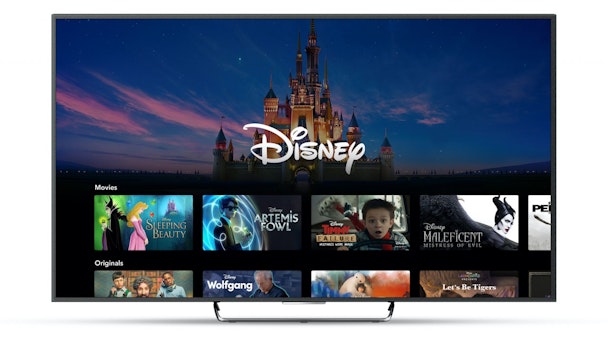How Disney operates the data clean rooms at the core of its CTV offering
Disney is embracing advertising on its jet-fueled rise into the streaming stratosphere. But as more scrutiny comes to the world of CTV, data clean rooms are how it is ensuring data doesn’t leave the platform. Dana McGraw, vice-president of audience modeling and data science, explains.

Disney+ is creating an ad-funded tier to help it reach 260 million subscribers by 2024
The entertainment giant seeks to reach 260 million subscribers by 2024.
Across Disney’s portfolio of cross-platform inventory, McGraw’s team has been building clean room tech, which she says enables effective and privacy-safe collaboration with data. She cites InfoSum chief executive (it works with Disney) as saying the constructs ensure the “non-movement of data.”
McGraw says: “It grants the ability to collaborate with data without the data exchanging hands or moving at all in order to respect consumer privacy.”
NBCU, Disney and now Roku are now touting data clean rooms, inspired by incoming regulations and the dissolution of the third-party cookie.
How do clean rooms work?
Disney is working with InfoSum and Snowflake to help onboard brands into the clean room system.
Disney’s audience data and brand data both sit in their own silo. Data partners then scan both for audience matches, near matches and lookalikes. This comes as getting “a highly successful match rate ... gets more and more difficult,” with less-privacy-centric means where the data can change hands or leak.
McGraw says: “The move to clean rooms respects consumer privacy. We understand that the data should not move around, but there are also plenty of insights that can be gained this way around overall aggregated consumer behavior v individual behavior.”
To date, it has built some 2,000 targetable audience segments, which has roughly doubled in the last year. “They are like categories – the segments that are valuable for consumer packaged goods will be different to what’s valuable in the auto industry.”
Segments vary from ‘in the market for a car in the next six months’ to ‘predisposed to shop at a particular retailer’ or ‘chief decision-maker for consumer packaged goods buying in household.’
McGraw says that this has changed how buyers think about TV. Hockey fans on ESPN, she suggested, were once targeted solely on their love of the sport. With the additional data segments, “we can look at that and better understand the breakdown of that group of fans.”
She adds: “It graduates from being ‘let’s just buy hockey season, right’ to understanding all different subsets of those fans outside of the hockey season.”
So what more data is actionable? Disney knows many of these fans “love driving SUVs, drinking domestic beer, upgrading their phones and purchasing gaming consoles.”
By joining the dots of what these hockey consumers are watching across the house of mouse, Disney can more easily generate more “behavioral or psychographic information” for advertisers.
McGraw says: “Now we understand they consume tonnes of other content across our platform besides hockey, so there are lots of different ways to reach with the segmentation.”
Advertisers can now confidently reach these consumers outside of the NHL season all of a sudden, with it better understanding the journeys of logged-in users.
McGraw adds: “We have two totally separate clean rooms, [and our partners] manage the match in the middle. We get back the anonymized data and then return with, ‘we know that you were really interested in this group and here are all the places across our inventory that they over-index for consuming our content.’”
Disney Advertising Sales is working with Horizon Media to expand the measurement capabilities of its data clean room.
Building the data clean room
“We’ve been on this path for a while now,” says McGraw, who reflects on the journey. Disney has worked hard to deduplicate viewers across linear and streaming to increase the effectiveness of ad campaigns.
“Part of why we went down this path is because we built an in-house audience graph. We can look across each of those platforms, and deduplicate for the advertiser and say, OK, this is incremental audience on CTV.”
This also has implications for campaign measurement and attribution. The initial matches made for each bay can later rematch to enable measurement. “In theory, the clean room then serves to solve that problem as well, because we’re able to reconcile with our audience graph, we’re able to reconcile those ad exposures again to that same group.”
McGraw concludes by claiming that advertiser testers have given “incredible feedback.”
“I think everyone understands the importance and understands the potential, so now it’s a matter of, how do we evolve?”
Check out the Future of TV hub and subscribe to the newsletter here.

